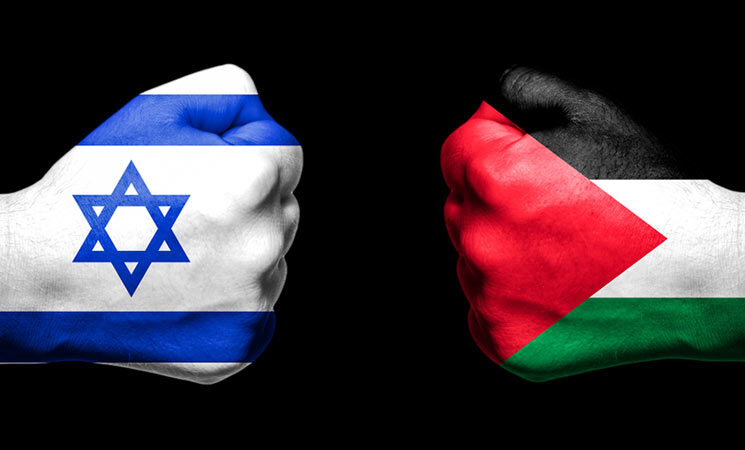10 July 2021, NIICE Commentary 7078
Dr. Gadde Omprasad
The election of Naftali Bennett as new Israeli Prime Minister, within one month of the ceasefire between Israel and the Islamic Resistance Movement or Hamas representing Palestine after a violent conflict of about 11 days grabbed the attention of the world community. The ceasefire negotiated by US and its allies also pushed for a ‘Two States Solution’. Consequently, US President Biden sent his Secretary of State, Antony Blinken to negotiate further on the issue with Egypt, Jordan and Israel leaders.
Given the hardliner image and the stand taken by Bennett on the issue, it’s not going to be an easy task for the Biden administration to go ahead with the proposed solution. There are several complexities involved.
First, as per the UN General Assembly Plan resolution, 181 (II) adopted on 29 November 1947 for creation of Palestine and Israel states, both states have chunk of territories separated by each other with extraterritorial crossroads. It means there should be special arrangements for crossing, usually administered by United Nations or through any other mechanism. How far this kind of arrangements would be successful depends on how good relations the states share with each other. It is quite obvious that if the borders are not clearly demarcated, conflict ought to happen, and in this case, it is even more difficult and complicated.
Second, though the Oslo agreement of 1993 between Palestine Liberation Organisation (PLO) and Israel formally recognized the existence of each other and paved way for establishment of Palestine Authority (PA), questions over administrative authority of Jerusalem is still not resolved. Both Israel and Palestine declared Jerusalem as their capital and claim historical affiliation to the city, particularly on all sacred places. The UN Resolution 181 which proposed to keep Jerusalem under its control was rejected by both Palestinian and Israeli leaders. In 1949, then Israeli Prime Minister Ben Gurion went on to declare West Jerusalem as an integral part of Israel. Given the stand taken, Israel will not be ready to give away its control over the city, though international community has proposed to treat it as a common capital of both Israel and Palestine.
Third, the Palestinian territories, i.e. Gaza and West Bank which are physically separated are under the control of two political rivals. West Bank is controlled by moderate political party Fatah, where as the Hamas, more radical terrorist organization, dominates Gaza. While moderate parties which heads PA recognizes the very existence of Israel, Hamas rejects the same and fight for a Palestine which includes all the erstwhile territories including Israel as part of a greater Palestine. The Hamas Charter of 1988 declared whole of Palestine including Israel as a Waqf land, an endowment for all generations of Muslims, hence cannot accept its partition. Though the peace and reconciliation efforts which lasted for years diluted this hard line of Hamas and it’s 2017 ‘Document of General Principles and Policies’, did not mention the word ‘Waqf’ to refer to the land of Palestine, the real intentions of Hamas when it comes to accepting the two-state solution is still unknown.
Fourth, another most complicated issue is related to settlers and refugees. More than half a million Jews are living in settlements built by Israel in West Bank and Jerusalem, whereas about 5 million Palestinians were displaced from their homeland and are living in UN refugee camps in neighbouring countries. Finding a reasonable solution for them through relocation and resettlement is the most difficult task and can spark a large-scale violence.
‘Arab Solidarity’ the Biggest Paradox
Given these complications on ground, it will be a real challenge to persuade both Israel and Palestine (particularly Hamas) to accept the proposal of ‘two-state solution’. Hamas 2017 document accepts the creation of state of Palestine with the borders of 1967, but without recognizing the existence of Israel and without relinquishing its goal of ‘liberating all Palestine’, with Jerusalem as its capital and with the provision for return of all the refugees to their homeland, i.e. Israel. On the other hand, Naftali Bennett, newly elected Israeli Prime Minister rejects the very idea of ‘the Two-States’ solution. These stands of both the sides can lead to a deadlock.
Any attempts to resolve the issue and push for two states solution requires a larger representation and consultation. Though the international community supports the idea, the crucial support has to come from the immediate neighbourhood, i.e. Arab community, which at present is divided on political and religious lines. Hamas attracts significant support from Iran and Turkey, both are challenging the leadership of Saudi Arabia which is campaigning against Hamas for cutting off financial flows and political support among Arab countries. Iran is still the main source of financial and military support to Hamas. At the moment US has to heavily rely on the support of Jordan and Egypt to talk to Hamas as it does not have a direct contact with the terror organization. The more US maintain disengagement with Iran, there is more difficulties in bringing Hamas to fall in line for meaningful negotiations.
It will be a tight walk and a major challenge for Biden’s administration to tread through these complications and address the issue in an amicable way. Otherwise the ceasefire between Israel and Hamas should be seen only as temporary and should expect the region to witness large scale violent conflicts in future as in the past, similar violent conflicts and ceasefires in 2008, 2012 and 2014 brought only temporary peace.

